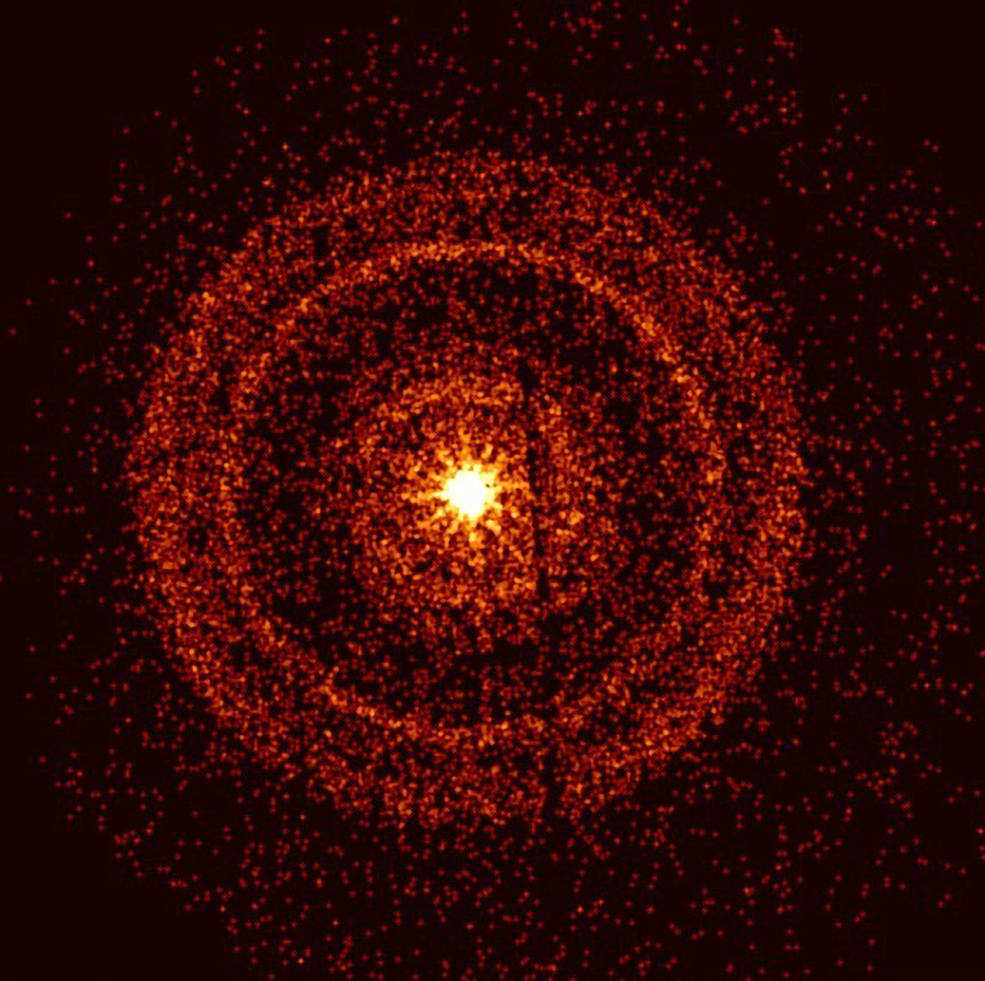A team of astronomers recently made a groundbreaking discovery regarding the brightest cosmic explosion ever recorded. The event, named AT2021lwx, was initially detected by the Zwicky Transient Facility (ZTF) in California in November 2020. It was identified as a potential supernova, but further analysis revealed that it was far more remarkable than initially thought.
The brightness of AT2021lwx steadily increased over several months, surpassing the luminosity of any known supernova by more than tenfold. What set this explosion apart was its unusually prolonged duration, lasting for over three years. These characteristics led astronomers to theorize that the event was the result of a collision between two neutron stars.
Neutron stars, remnants of massive stars that have undergone supernova explosions, possess an incredibly high density. With a mass approximately 20 times that of the Sun compressed into a sphere roughly the size of a city, these objects are remarkably compact. When two neutron stars collide, they merge to form an even more massive neutron star. This merger generates an immense release of energy, leading to an exceptionally bright explosion.
The direct observation of the AT2021lwx collision marks a significant milestone in the field of astronomy. It provides valuable insights into the physics of neutron stars, supernovae, and potentially even the formation of black holes. By unraveling these cosmic phenomena, scientists gain a deeper understanding of the universe's workings and our place within it.
The discovery of AT2021lwx serves as a reminder of the vastness and power of the universe. It underscores the critical role of astronomical research in expanding our knowledge and comprehension of the cosmos. Through the study of celestial bodies and events, we continue to uncover the fundamental principles governing our existence.
Information about the brightest cosmic explosion of all time:
- The collision between the two neutron stars released an estimated 10^46 joules of energy, which is about 100 times more energy than the Sun will emit over its entire lifetime.
- The explosion was so bright that it could be seen with the naked eye from Earth, even though it occurred in a distant galaxy.
- The explosion also produced a gamma-ray burst, which is a brief but intense burst of high-energy radiation.
- The discovery of AT2021lwx has important implications for our understanding of the universe. It provides the first direct evidence of the existence of neutron stars and their collisions. It also provides new insights into the physics of supernovae and gamma-ray bursts.
Here are some of the things that scientists hope to learn from studying AT2021lwx:
- They want to learn more about the physics of neutron stars. Neutron stars are incredibly dense objects, and scientists are still learning about their properties.
- They want to learn more about the physics of supernovae. Supernovae are one of the most powerful explosions in the universe, and scientists are still trying to understand how they work.
- They want to learn more about the physics of gamma-ray bursts. Gamma-ray bursts are the most powerful explosions in the universe, and scientists are still trying to understand how they work.
The discovery of AT2021lwx is a major breakthrough for astronomy. It is the first time that a collision between two neutron stars has been directly observed. This discovery could help scientists better understand the physics of neutron stars, supernovae, and gamma-ray bursts. It is a reminder of the vastness and power of the universe, and the importance of astronomical research.
Discover More
Most Viewed
Christmas is a season of joy, love, and traditions. And what better way to get into the holiday spirit than through timeless carols? These musical gems have been bringing people together for generations. Here’s our ranked list of the Top 10 Christmas Caro…
Read More
















